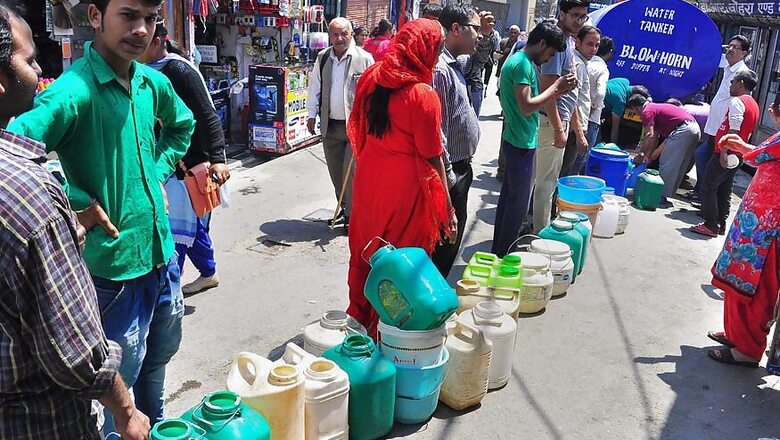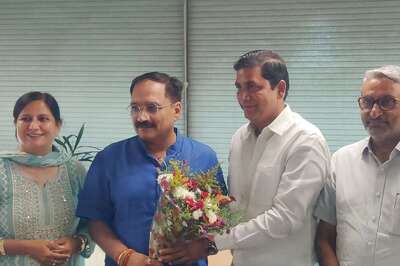
views
Chandigarh: On June 1, the skies over Shimla opened up and the locals had something to cheer about. The mercury did abate but the downpour wasn’t enough to ensure that residents, who have been struggling due to water scarcity for the past 10-12 days, get enough to meet their needs.
The summer capital of the British Raj is facing the worst water crisis it has ever seen. Taps are running dry even as natural resources like springs and freshwater pits have dried up or have been rendered redundant thanks to the negligence of the authorities and an equal exploitation by locals.
Long queues for water are commonplace in the city these days with some even thronging the crematoria to fill up their buckets.
The grim situation has sent the authorities into a tizzy. The state government, as well as the municipal corporation, devised new short-term methods to address the catastrophe. Water tankers under police protection have been pressed into service, water for irrigation purposes in places like Gumma (from where water is lifted for the city) has been stopped and some social organisations have deployed tankers to transport about 20 lakh litres of water from the Sutlej and dump it in the Gumma plant. The practicality of it still eludes many.
The issue has even reached the judiciary with the Himachal Pradesh High Court taking suo motto cognizance and is monitoring the situation on a daily basis. The acting Chief Justice, Sanjay Karol, who is heading the special bench on the water crisis, personally went on a night vigil, visiting the control rooms of the Municipal Corporation at 3:00 am on the intervening night of Wednesday and Thursday, a gesture ample enough to underline the gravity of the situation.
The crisis has also hit the tourist industry with visitors packing their bags and returning home. Locals even took to social media to highlight their plight and have appealed to tourists to not visit Shimla. “There is no water for us, please do not come here. Select another destination,” they pleaded.
Shimla requires around 42 million litres per day (MLD) as against the 36 MLD supply. Normally, during summers, the water supply comes down to 30 MLD but for the past 10 days the supply has drastically fallen to 22 MLD. This is mainly due to shortage of water in natural sources owing to the region receiving scant snowfall.
The city was planned by the British for 20,000 people, 142 years ago. Accordingly, the British had laid down a water supply system to meet the demand. Today Shimla’s population has increased to over 2.5 lakh but the water supply hasn’t seen that much growth. The influx of tourists during peak summer season puts an additional burden of about 80-90 thousand people on the already stretched water resources.
The city still gets its water from the age-old water pumping system installed by the British for the then ‘not-so-populated’ Shimla. The water is still lifted from nearby khuds or perennial streams and is catered to the residents.
Shimla gets its water supply primarily from Gumma and Ashwini Khud. Water lifted from these places is supplied to the city through an intricate system of pipes. However, supply from Ashwini Khud has been currently reduced after there were reports of sewage mixing with drinking water supply. The Khud was contaminated in 2005 by the upstream construction of a Sewage Treatment Plant (STP), killing over 10 persons and infecting the populace with jaundice.
There are numerous factors which have led to this acute water crisis in the ‘Queen of Hills’. The city receives a good precipitation but the terrain ensures that the water just gushes down the slopes, without anybody harvesting it. The topography doesn’t allow each and every one an access to roads — a major impediment in providing water through tankers, which the Municipal Corporation has been relying on for the past few days. Besides unplanned urban growth, large-scale deforestation is also equally to blame.




















Comments
0 comment